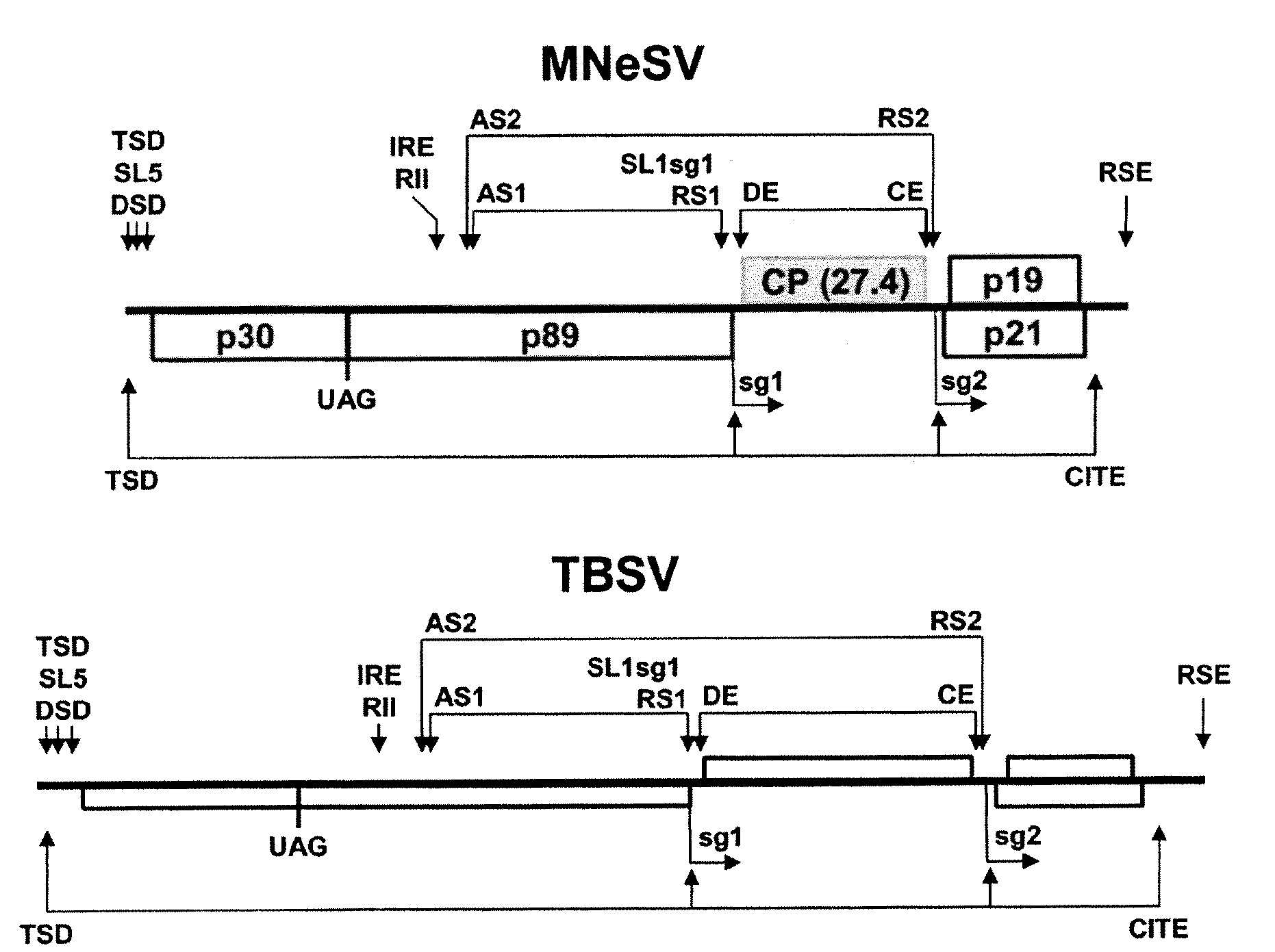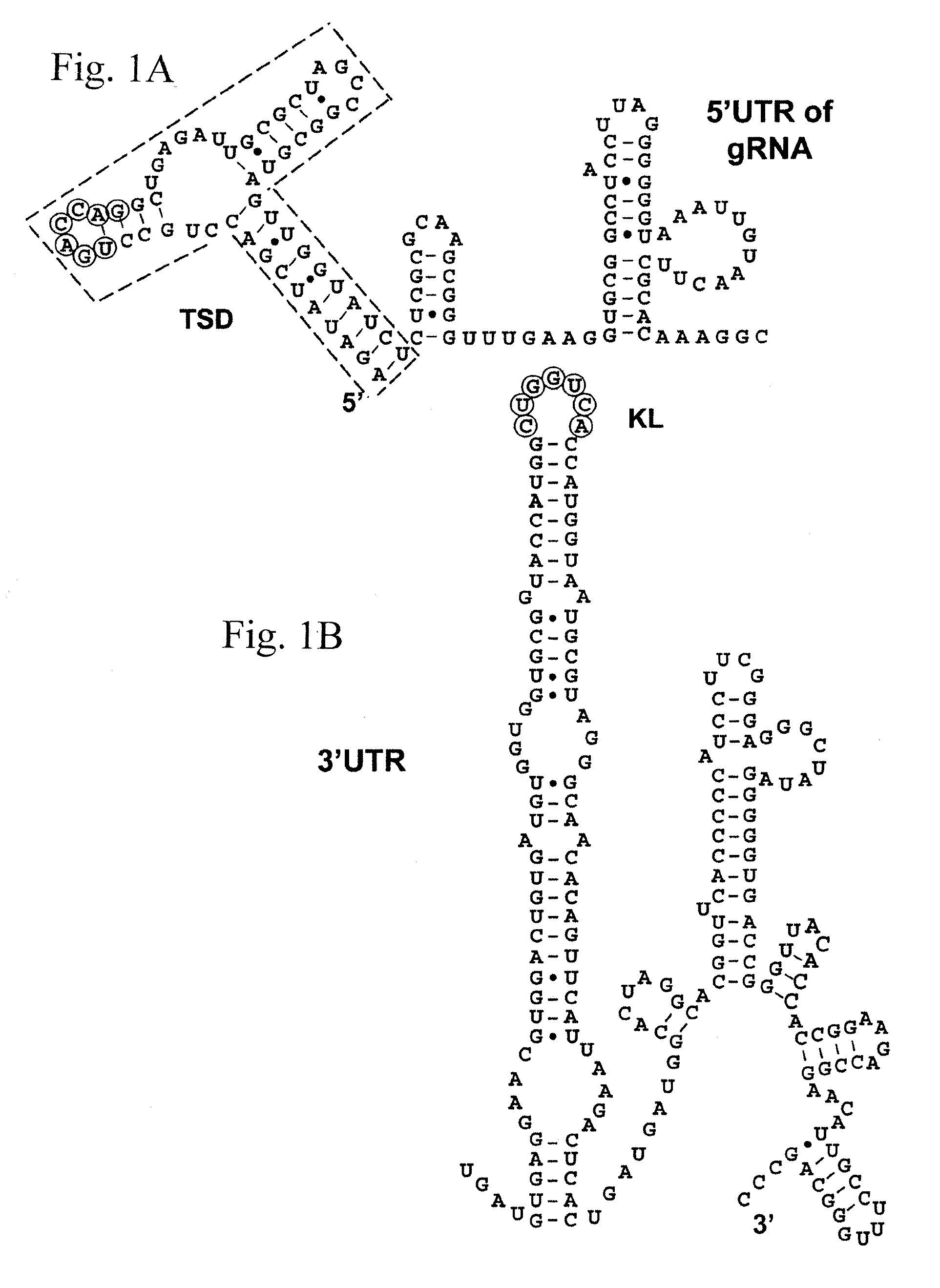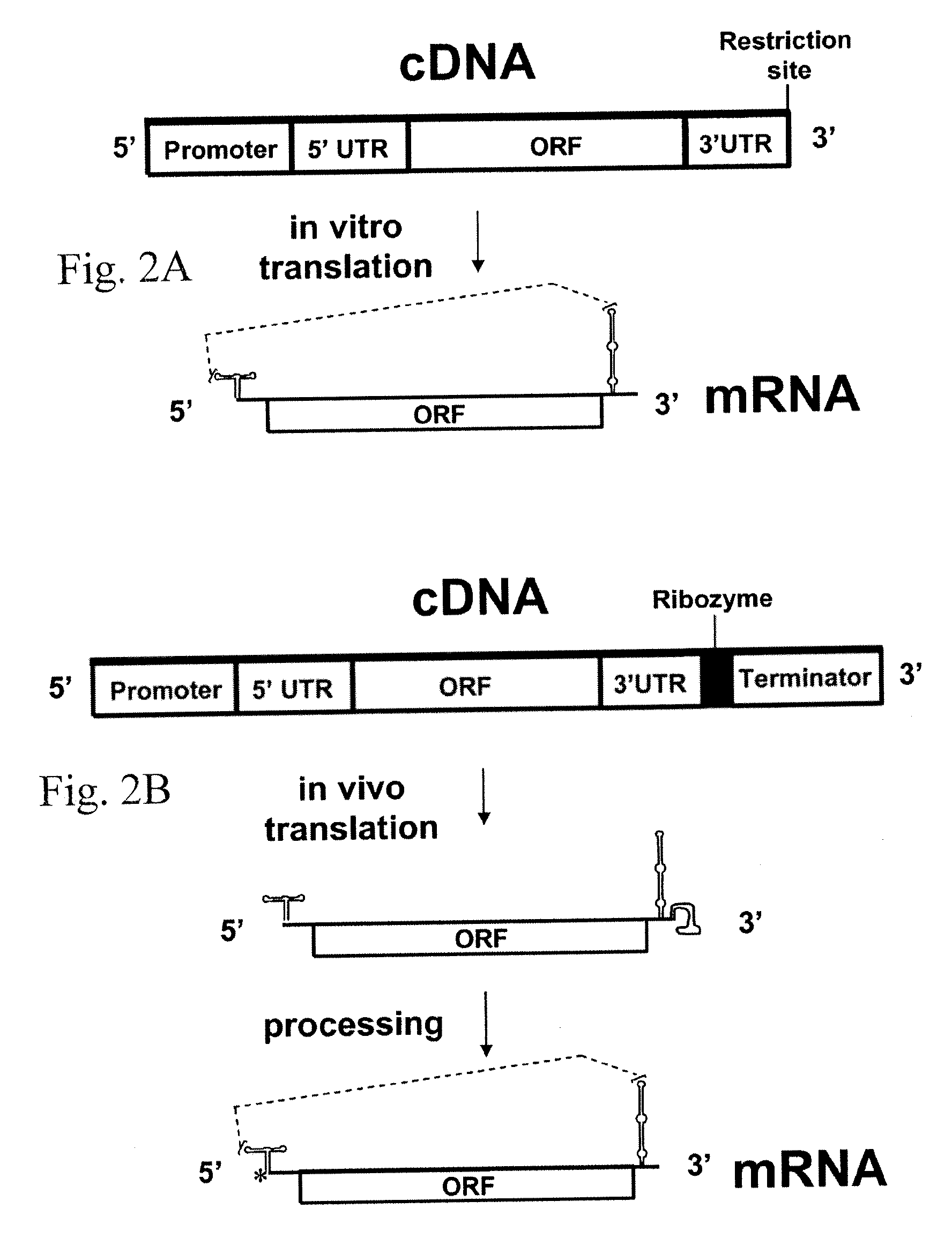CAP-Independent Translational Enhancer for Protein Synthesis in Wheat Germ Extract and Transgenic Cereals
a translation enhancer and wheat germ technology, applied in the field of cap-independent translation enhancer for protein synthesis in wheat germ extract and transgenic cereals, can solve the problems of low efficiency of bydv cite, add extra inconvenience and cost, and provide translational enhancemen
- Summary
- Abstract
- Description
- Claims
- Application Information
AI Technical Summary
Benefits of technology
Problems solved by technology
Method used
Image
Examples
example 1
Infectious cDNA Transcripts of Maize Necrotic Streak Virus: Infectivity and Translational Characteristics.
[0043]Maize necrotic streak virus (MNeSV) is a unique member of the family Tombusviridae that is not infectious by leaf rub-inoculation and has a coat protein lacking the protruding domain of aureusviruses, carmoviruses, and tombusviruses (Louie et al., Plant Dis. 84, 1133-1139, 2000). Completion of the MNeSV sequence indicated a genome of 4094 nt. RNA blot and primer extension analysis identified subgenomic RNAs of 1607 and 781 nt. RNA and protein sequence comparisons and RNA secondary structure predictions support the classification of MNeSV as the first monocot-infecting tombusvirus, the smallest tombusvirus yet reported. Uncapped transcripts from cDNAs were infectious in maize (Zea mays L.) protoplasts and plants. Translation of genomic and subgenomic RNA transcripts in wheat germ extracts indicated that MNeSV has a 3′ cap-independent translational enhancer (3′CITE) located ...
example 2
Determining the Importance of Base-Pairing Interactions Between 5′ and 3′UTRs for MNeSV RNAs In Vitro and In Vivo
[0144]To determine if mutations of one to three nucleotides (nt) in the “kissing” loop of the 5′ UTR of genomic transcripts could decrease translation, four mutant cDNAs (pTSDm1, pTSDm2, pTSDm3, pTSDm13) were produced. The mutations would allow maximum consecutive base-pairing between the T-shaped domain (TSD) and wild type 3′CITE of five to seven base pairs compared to seven base pairs for wild type (WT). Transcripts from pTSDm2 could produce seven base pairs, but two G-U base pairs (2 hydrogen bonds / pair) replace G-C base pairs (3 hydrogen bonds / pair) leading to an overall weaker base-pairing interaction. Equimolar amounts of the full length WT and mutant transcripts were translated in WGE and analyzed by SDS-PAGE (FIG. 11C). As expected, the modified RNAs translated less well than the WT transcript producing 10% (TSDm13), 11% (TSDm2), and 22% (TSDm1 and TSDm3) of WT le...
example 3
Decreasing the Distance Between the 5′ and 3′ UTRs Increases Translation in Wheat Germ Extract
[0148]Previous work indicated that the translation efficiency of MNeSV RNAs was sgRNA2>sgRNA1>gRNA which is indirectly proportional to the length of the viral RNAs. The ability of the 5′ and 3′ UTRs of these RNAs to interact may depend on the context of the sequence in the 5′ UTR, the distance between the 5′ and 3′ UTRs, or both. To determine if the distance is an important factor, deletion mutants of p2-2 were constructed that removed about 40% of the DNA between the p30 ORF stop codon and the 3′ UTR leaving the p30 ORF as the only intact coding region (FIG. 12A). Equimolar amounts of full length and shortened transcripts were translated in WGE and analyzed by SDS-PAGE. The shorter RNAs synthesized about twice as much p30 as the full length RNA (FIG. 12B). This experiment demonstrates that moving the 5′ UTR and 3′UTR closer together increases translation in vitro when using the same contex...
PUM
| Property | Measurement | Unit |
|---|---|---|
| Nucleic acid sequence | aaaaa | aaaaa |
| Fluorescence | aaaaa | aaaaa |
Abstract
Description
Claims
Application Information
 Login to View More
Login to View More - R&D
- Intellectual Property
- Life Sciences
- Materials
- Tech Scout
- Unparalleled Data Quality
- Higher Quality Content
- 60% Fewer Hallucinations
Browse by: Latest US Patents, China's latest patents, Technical Efficacy Thesaurus, Application Domain, Technology Topic, Popular Technical Reports.
© 2025 PatSnap. All rights reserved.Legal|Privacy policy|Modern Slavery Act Transparency Statement|Sitemap|About US| Contact US: help@patsnap.com



